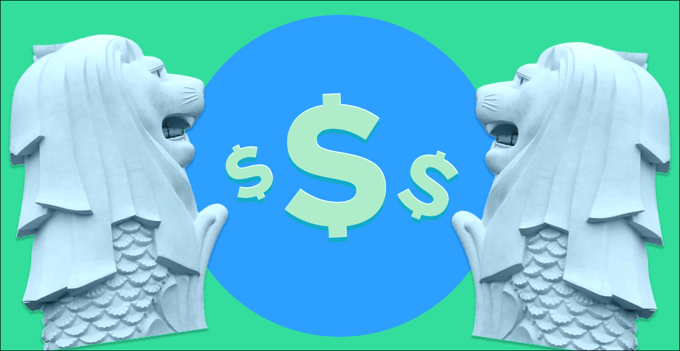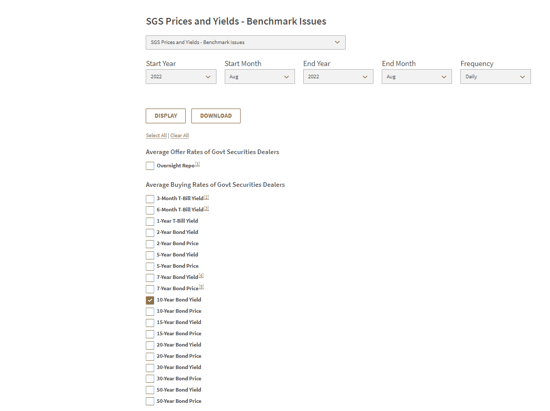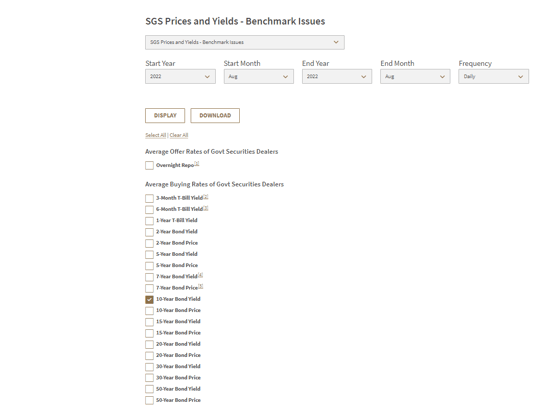CPF vs the SSB: which is better?
So with interest rates for the SSB on the rise, you may be wondering which between the SSB and CPF is the better investment to park your money in. So let’s take a look at their differences.
Interest rate
CPF
By this point, you’re probably familiar with CPF’s interest rates: you earn 2.5% per annum on your CPF OA, and 4% per annum on your CPF SA, MA, and RA (if you’re aged 55 years and above).
Additionally, if you’re 55 years old and below and have a combined savings of S$60,000 in your CPF accounts (capped at S$20,000 for CPF OA), the government will pay you an extra 1% interest.
This means that you can earn up to 5% for the first S$60,000 that you have in your CPF accounts, but this is capped at S$20,000 for OA.
If you’re aged 55 and above, you’ll be eligible for an additional 2% interest and up to 6% on the first S$30,000 of your combined CPF savings (capped at S$20,000 for CPF OA). You’ll also earn an additional 1% on the next S$30,000 of your combined CPF savings (capped at S$20,000 for OA).
One thing to note is that while CPF interest rates have been fixed for a long time, they’re not permanent. The rates are reviewed every quarter.
On top of that, CPF interest rates are also compounded annually. This means that you earn interest on top of your interest.
Using the rule of 72, you can get a close estimation of how long it takes for your investment to double. To calculate, all you need is to divide 72 by the expected rate of return.
For example, to calculate the number of years needed for your CPF SA funds to double:
72/4 (rate of return for CPF SA)
= 18 years
SSB
In contrast, the SSB follows a simple interest rate, so the interest is based on the principal amount invested.
The interest rate is also determined by the SGS yields from the previous month. So unlike CPF, the interest rate changes from month to month.
Although the SSB interest rate increases the longer you hold onto the bonds, it still pales in comparison to your CPF SA/RA’s 4% interest rate. Add to the fact that your CPF gives your compound interest and bonus interest, and CPF wins by a mile.
Liquidity
CPF
If you’ve hit your Full Retirement Sum (FRS) when you turn 55, you can withdraw any amount above it. Otherwise, you can only withdraw up to S$5,000.
Moreover, while you can top up your CPF accounts either via voluntary top-ups or RSTU, remember that it's irreversible; you can't withdraw your money after that.
SSB
On the other hand, the SSB offers more flexibility compared to CPF.
You can withdraw your money at any time (principal amount + accrued interest), even before the bond matures. Furthermore, there’s no penalty for early withdrawals.
This makes the SSB a good place to park some of your emergency funds. For example, if you experience a sudden loss of a job or have sudden medical expenses, the money can act as a safety net to help you tide over for a few months.
You can also use it for short-term needs in the future, such as paying for your wedding or a downpayment for your house.
Lastly, you can use your money to re-invest in other financial instruments that can grow your money faster.
However, note that you can only withdraw in multiples of S$500 (S$500, S$1,000, S$1,500, and so on). Another thing to take note of is that withdrawals are not immediate and may take up to 30 days.
Tax relief
CPF
You can enjoy a tax relief of up to S$8,000 per calendar year when you make top-ups to your CPF SA/RA, or MA via the Retirement Sum Topping-Up scheme (RSTU). Additionally, you can enjoy a further S$8,000 in tax relief if you top up your loved ones’ SA/RA or MA.
SSB
On the other hand, there’s no tax relief when you buy the SSB. You can, however, enjoy tax relief if you invest in the SSB with your SRS funds.
Maximum amount that you can invest in
CPF
For CPF, the maximum top-up you can make to your CPF accounts is up to the FRS, which is adjusted annually. For those turning 55 in 2022, the FRS is S$192,000. Once you've reached this limit, you can't make further contributions.
There's also a maximum limit for your MA too; your voluntary contributions to your MA are up to the Basic Healthcare Sum (BHS), which is S$66,000 in 2022 if you're 65 years and below.
SSB
On the other hand, the maximum bond you can buy from the SSB is S$200,000. You won't be able to buy more than that until you've redeemed some of your bonds.
Bottom line
In general, the SSB are considered safe investments if you want to park your emergency funds.
Compared to the CPF, the SSB is more flexible and liquid, and you can redeem your money at any time. Morever, the max limit you can invest is S$200,000, which is higher than the current FRS of S$192,000.
On the other hand, the CPF offers higher interest rates. And through the magic of compound interest, your money will always grow much faster when it’s in your CPF accounts.
Remember that bonds, such as the SSB, are important in a diversified portfolio as they help to hedge against market volatility.
That said, remember to aim for a well-diversified portfolio with different asset classes based on your risk tolerance and investment horizon.
If you'd like to know how to build your CPF savings for retirement, here are some strategies to help you out. Or, if you want to invest in other SGS investments, consider investing in T-bills and SGS bonds.
Read these next:
How To Build Sustainable Retirement Income With Your CPF Money
Emergency Fund: How To Build It The Less Painful Way And Where To Keep It
What Can CPF Be Used For, Aside From Supporting Your Retirement?
What Are Fixed Income Investments, And How They Fit Into Your Portfolio
7 Popular Types Of Investment In Singapore (And Tips To Use Them For Optimal Gains)
Similar articles
3 Awful Consequences Of Trying To Invest Your CPF Money
A Complete Guide to Treasury Bills (T-Bills) in Singapore
8 Investments You Can Make Under The CPF Investment Scheme (CPFIS)
Best Bond Market Index Funds To Buy in 2022 On The Singapore Stock Exchange
How To Build Sustainable Retirement Income With Your CPF Money
What Are SGS Bonds And Should You Invest In Them?
5 Things to Consider Before You Invest Your CPF
CPF Special Account (SA) Shielding: How You Can Perform This Retirement ‘Cheat Code’








.png?width=800&height=250&name=Moomoo_S$60_S$160Cash_BLOGARTICLE_800x250%20(1).png)



%20%E2%80%94%20Return%20Rates%20And%20How%20It%20Works.png?width=280&name=The%20Complete%20Guide%20To%20Singapore%20Savings%20Bond%20(SSB)%20%E2%80%94%20Return%20Rates%20And%20How%20It%20Works.png)

